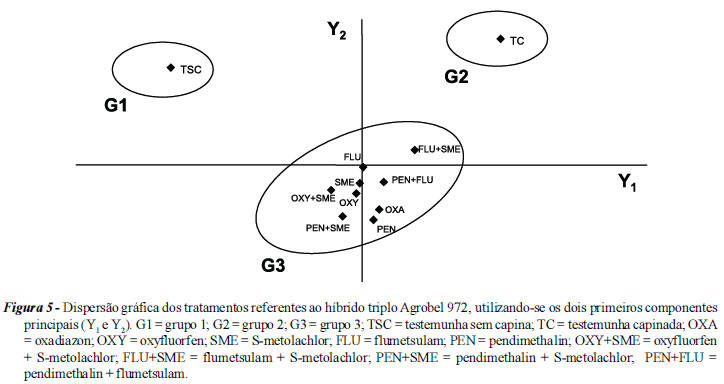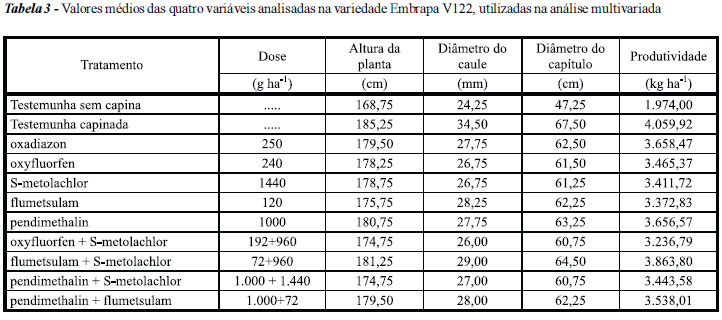This study aimed to evaluate the effect of applying different pre-emergent herbicides, alone and in combination, on sunflower crop in wetland soil. The sunflower variety Embrapa V122 and the triple hybrid Agrobel 972 were evaluated individually using a randomized block design with four replications. Two experiments were conducted, with the following treatments being used in both: oxadiazon (250 g ha-1), oxyfluorfen (240 g ha-1), S-metolachlor (1.440 g ha-1), flumetsulam (120 g ha-1), pendimethalin (1.000 g ha-1), oxyfluorfen+S-metolachlor (192+960 g ha-1), flumetsulam+S metolachlor (72+960 g ha-1), pendimethalin+S-metolachlor (1.000+1.440 g ha-1), pendimethalin+flumetsulam (1.000+72 g ha-1), and two controls, with and without weeding. Plant height, stem diameter, chapter and grain yield diameter were submitted to statistical multivariate tests of cluster analysis and Principal Components Analysis. The results were similar in both cultivars evaluated, showing the formation of three main groups. with the first and second groups consisting of the controls with and without weeding, respectively. The third group was composed of the herbicides applied alone and in combination. The effects caused by the herbicides applied alone and in combination on the variables analyzed were found to be less harmful than the effects of weed interference. These results show the potential for selectivity of the herbicides applied alone and in combination on the sunflower variety Embrapa V122 and on the triple hybrid Agrobel 972, under the evaluated conditions.
multivariate analysis; Helianthus annuus; tank mixture; weed; selectivity












